Over the years of turning out content for this blog, I’ve visited a lot of historical sites but I’ve never visited a site quite like the Trinity Site in New Mexico.
It’s an ultra-remote site barely ever open to the public and it’s home to one of the most pivotal moments in mankind’s history.
If you have any type of interest in the atomic era, this is a bucket-list worthy destination for sure.
In this article, I’ll tell you everything you need to know about visiting the Trinity Site’s open house.
Table of Contents
What is the Trinity Site?
The Trinity Site is where the first nuclear bomb exploded on July 16, 1945 at 5:29 AM mountain war time. Two days out of the year there is an open house that allows the public to visit the site along with other related sites like the McDonald Ranch House.
Tip: Use the free app WalletFlo to help you travel the world for free by finding the best travel credit cards and promotions!
How to visit the Trinity Site
It is free to visit the Trinity Site but you can only visit the site two days out of the year, which is usually the first Saturday of April and October. However, sometimes they do change the dates around a little bit.
There are three main ways that you can visit the Trinity Site.
Alamogordo Caravan
One way to experience the Trinity Site is to take part in the Alamogordo Caravan.
Line up for the caravan begins at 7:00am at the Tularosa High School Athletic Field parking lot and the tour will enter the missile range through the Tularosa Gate at 8:00am and arrive at Trinity Site around 10am.
It is only open to the first 125 vehicles that show up.
The journey is 85 miles one-way to Trinity Site.
Stallion Gate
The other way to experience the Trinity Site (which is the way that we did it) is to simply arrive at the Stallion Gate. This gate is located on the north side of the missile range on U.S. highway 380, 12 miles east of San Antonio, NM.
The Stallion Gate Hours are from 8:00 a.m. to 2:00 p.m. and the Trinity Site closes promptly at 3:30 p.m
Once you show up at the military testing site, you’re not allowed to take any photos until you arrive inside the Trinity site so keep that in mind.
It’s about a 30 minute drive from the Stallion Gate to the parking lot for the Trinity Site.
At the Stallion Gate, you’ll go through a security checkpoint where every passenger 18 years and older will need to show an ID and declare that they are not bringing in weapons or any illegal items. (It only takes a few seconds to get through.)
Once you arrive at the parking area, military personnel will direct you to your specific parking spot.
Related: New Mexico Safety Corridors Explained
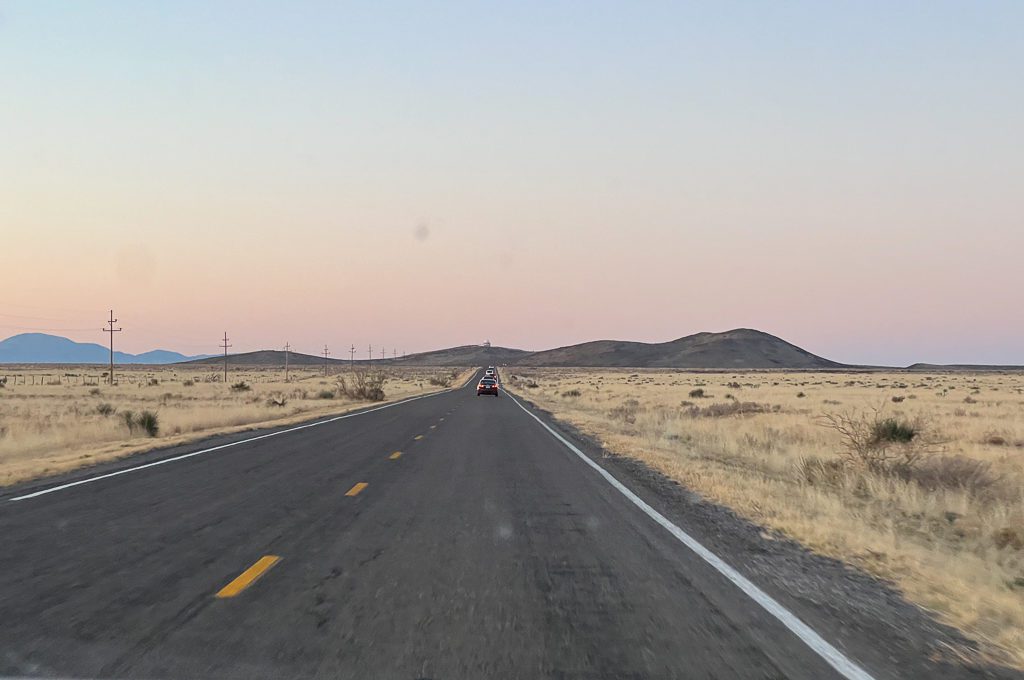
Book a tour
You can also book a tour to get you there.
For example, the New Mexico Museum of Space History offers a package deal where you can get a bus ride to and from the site, some snacks, and access to the museum.
We checked out the museum and thought that it was a pretty well done space museum. They also have a small exhibit on Trinitite which was cool to see.
Where to stay
You might consider staying in Albuquerque, New Mexico, or in Alamogordo which is where we stayed because we decided to explore the New Mexico Museum of Space History and White Sands National Park the next day.
If you’re headed to Albuquerque, be sure to check out The National Museum of Nuclear Science & History and consider adding Los Alamos as an additional stop.
Los Alamos was the headquarters for the Manhattan Project and they still have a couple of museums you can check out like the Los Alamos History Museum and the Bradbury Science Museum.
Trinity Site history
To fully grasp and appreciate the history of the Trinity Site it helps to understand how it fits into the overall efforts of creating the atomic bomb.
The history of the atomic bomb begins in Berlin, Germany when in 1938, scientists discovered how to split the nucleus of the uranium atom (fission).
This discovery came close to the beginning of World War II when Adolf Hitler invaded Poland in September 1939.
The breakthrough in fission created serious worry that the Nazis would get their hands on a nuclear weapon which would obviously not be ideal to say the least.
Concerned Hungarian physicists helped write a letter to President Roosevelt (FDR), signed by none other than Albert Einstein, to warn the US about the prospect of an “extremely powerful” Nazi atomic bomb.
After that, it didn’t take long for FDR to authorize a top-secret project to begin researching the atomic bomb.
The initiative went through a few name changes but ended up as the: Office of Scientific Research and Development (OSRD).
Things took off after the bombing of Pearl Harbor on December 7, 1941 when the US found itself involved in World War II with a formal declaration of war on both Japan and Germany.
President Roosevelt authorized the Manhattan Project on December 28, 1942 and on the 18th floor of 270 Broadway in New York City, the Manhattan Project began.
General Leslie Groves was appointed to lead the Manhattan Project after just just finishing the completion of the Pentagon.
Groves went on to recruit Robert Oppenheimer, an instructor at the University of California at Berkeley and a bit of an odd selection given his lack of managerial experience and associations to communism via family members.
But he proved to be an ideal candidate and an excellent recruiter of scientific talent.
The Manhattan project sought to create atomic bombs from two substances: uranium and plutonium.
For uranium, they were focused on acquiring U-235 and they built a huge complex and town in Oak Ridge, Tennessee to accommodate 30,000 workers.
For Plutonium, the Hanford Engineer Works produced plutonium at a site along the Columbia River in Washington state.
They also needed a place to develop and test the bombs.
They wanted somewhere secret and remote but still appealing enough to attract renowned scientists all over the world so they went with Los Alamos, New Mexico.
On January 1, 1943, the Los Alamos Laboratory — known as Project Y — was formally established.
And a few months later, the University of California signed a contract with the United States Army Corps of Engineers to operate the secret laboratory.
They once again built an entire city just for the purpose of the Manhattan Project and hundreds of people would arrive to the city with no clear idea as to what they were actually building.
(Pretty much only scientific personnel had an idea of what they were doing.)
Questions were highly discouraged and on paper the city didn’t actually exist.
Many experiments were done as the teams collaborated to construct the bombs and waiting for the nuclear material to arrive. At some point, though, it became clear that the plutonium bomb was going to be an issue.
The issue was that creating an explosion with plutonium was a much more complicated process.
The scientist had to create an entirely different type of mechanism to initiate the chain reaction and that’s when they came up with implosion.
The implosion-type nuclear weapon, “held a core of subcritical plutonium which would reach criticality when high explosives surrounding the core detonated causing the core to compress instantly.”
The creation of this new type of work and was so challenging that it required bringing in a lot more scientists. Unfortunately, when bringing in more talent at least one Russian spy made his way into the team.
The team would ultimately make progress but unexpected challenges arose in April 1945 and the work was interrupted when FDR died in office.
Shockingly, the Vice President Harry Truman did not even know about the Manhattan Project when he took office!
A month later, on May 7, 1945, Germany would surrender but the war was still going strong in the Pacific Theater and an atomic weapon was being considered for use against the Empire of Japan.
The allies had battered the Empire of Japan’s military down to a shadow of what it had been before but casualties were still running very high.
But before any bombs would be dropped, some testing needed to be done.
Testing at the Trinity Site
Back in September 1944, around the time nuclear material was arriving, New Mexico’s Alamogordo Bombing and Gunnery Range (aka the Trinity Site) had been selected as the the test location.
It was located about 210 miles south of Los Alamos, and in November 1944 construction of the base camp began.
All of the components of the uranium atomic bomb had been tested giving scientists the mathematical certainty they needed to know that the bomb would work.
But because the plutonium bomb was more complex they needed a test run to ensure that it would work.
The plutonium bomb set to be tested at the Trinity Site was known as “Gadget.”
The core of the bomb consisted of a grapefruit-sized ball of plutonium and was delivered to the McDonald Ranch House on July 11, 1945 and the bomb was assembled on July 13, 1945.
The bomb, a large 6-foot sphere covered with wires and patched up with tape, was then hoisted up a 100-foot steel tower for the test.
At the time, none of the scientists truly knew what was going to happen. In fact, many thought the bomb would be a dud.
On the day of the test, the weather did not cooperate at first and the team postponed the test until the skies cleared up a little bit.
Then at 5:29:45 a.m. Mountain War Time on July 16, 1945, first atomic bomb was tested.
After the bomb exploded, clouds of bright reds and purples filled the sky up to 40,000 feet high. People said they felt the warmth of the sun.
Local newspapers were told that an ammunition depot had exploded which had resulted in the spectacular display but those at the site knew the truth: humankind had entered the atomic age.
The Trinity site
Ground zero
Ground Zero is about a quarter mile away from the parking lot so you have to walk a little bit to get there.
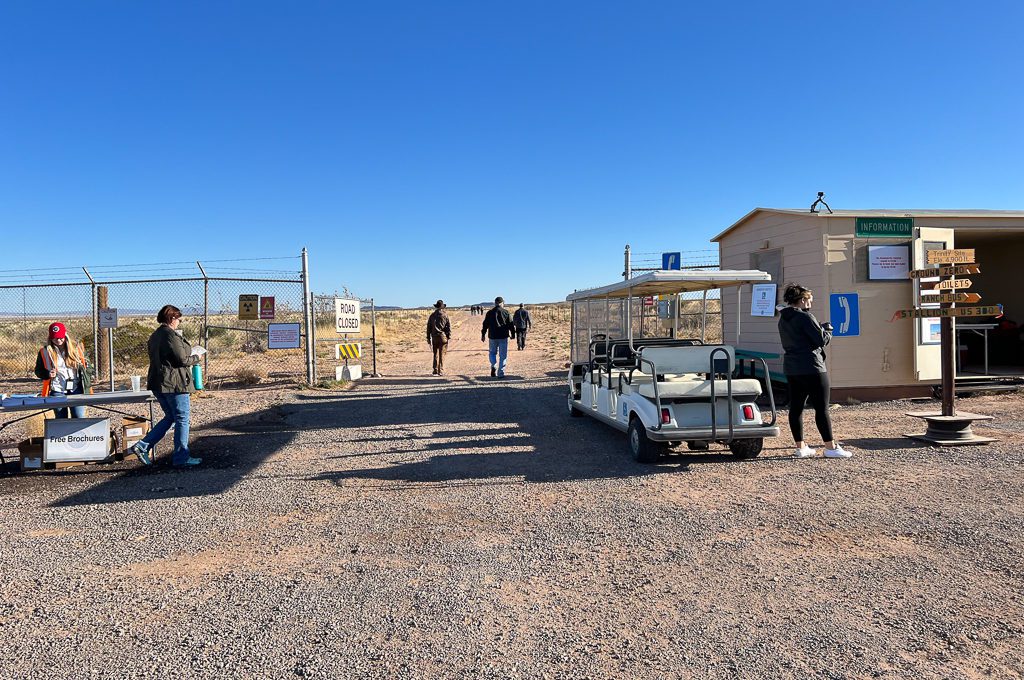
Once you arrive, you’ll see a monument towering in the middle.
Erected in 1965, The Trinity Monument is a lava-rock obelisk about 12 feet (3.7 m) high that marks the explosion’s hypocenter.
Crowds gather around the monument pretty quickly so you might need to exercise some patience to get a photo.
Right next to the obelisk, you can find the remains of the 100 foot steel tower that hoisted Gadget.
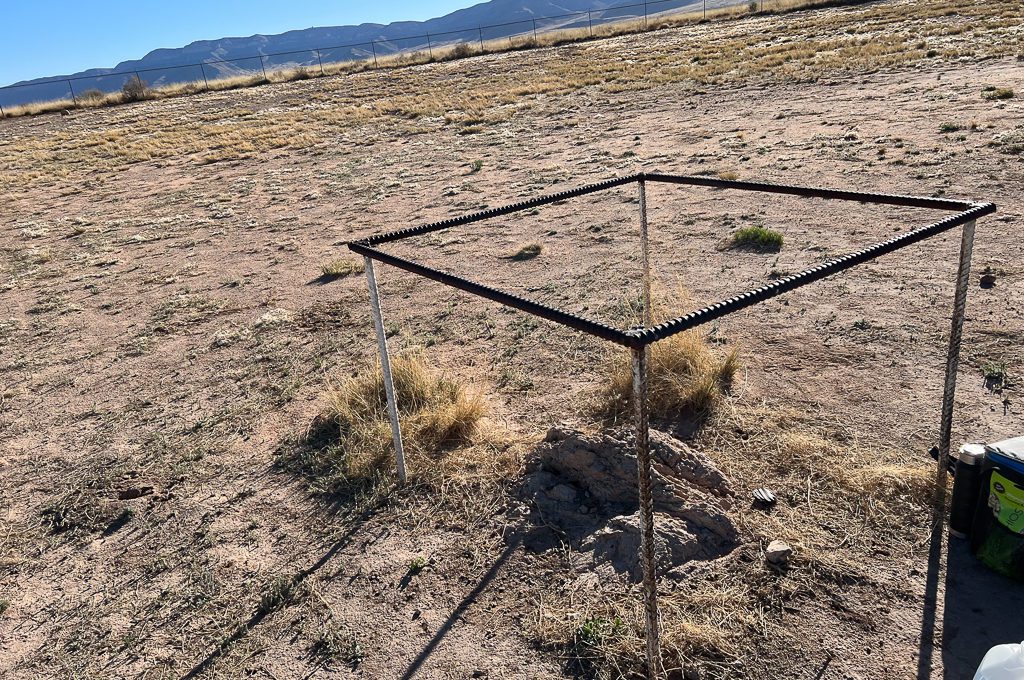
Along the perimeter of Ground Zero, you’ll find photos hanging from the fence that will give you some insight into everything going on at the time of the test. It’s best to start from right to left when viewing these.
There’s a structure that covers some of the original soil from the test but sand and dust got in and covered up the original soil so the viewing window has been closed.
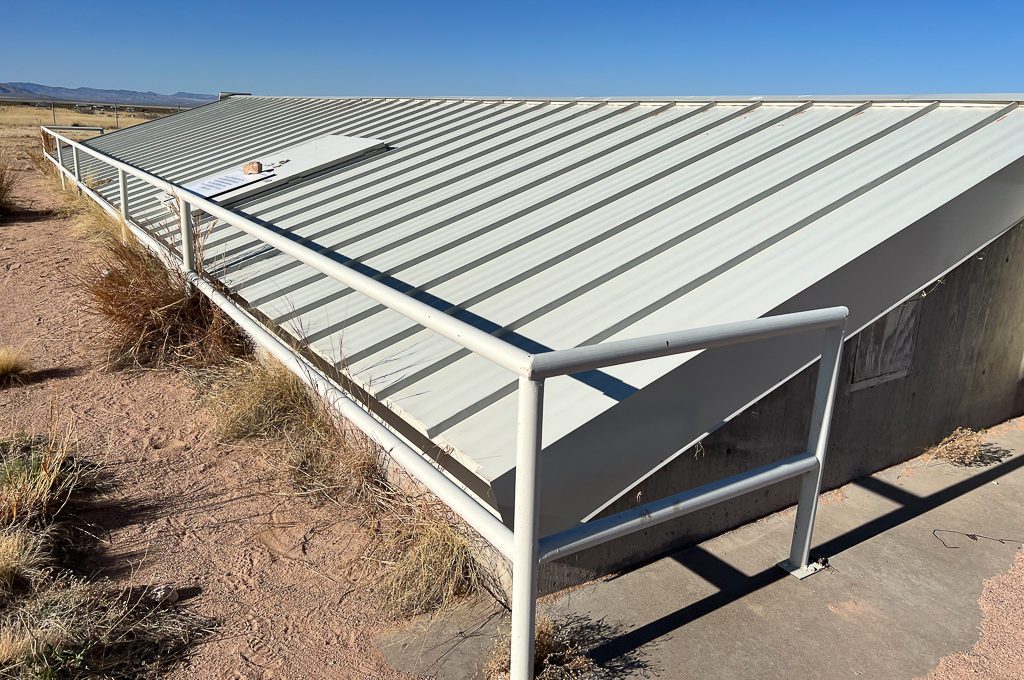
There’s also a bomb casing that I believe was going to be used for future atomic bombs. It’s almost identical to the casing used for the fat man bomb which was dropped on Nagasaki.
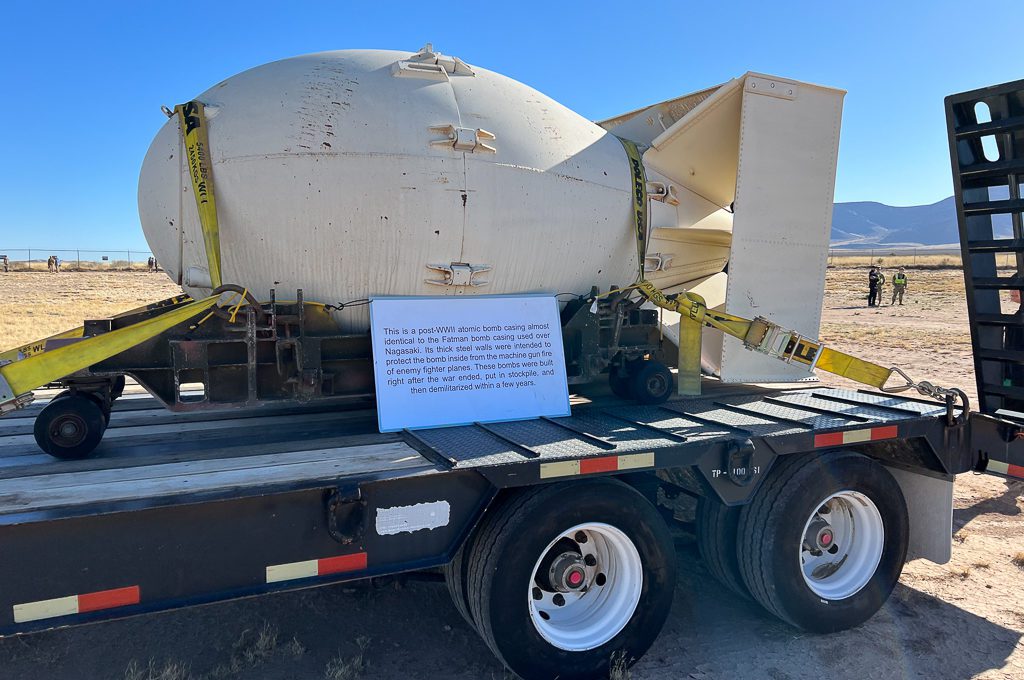
Trinitite
Trinitite is a radioactive green glass-like substance that covered the depressed area where the explosion took place after the test.
There’s different explanations as to how the trinitite was formed.
The simple and long-held explanation is that the heat simply heated the sand until it became glass.
One hypothesis is that the explosion brought pieces of sand and rock into the fireball and liquefied the pieces which eventually fell down like rain into the crater and hardened.
I’m not sure which explanation might be more accurate but I think it’s safe to say that it had a lot to do with the heat from the explosion.
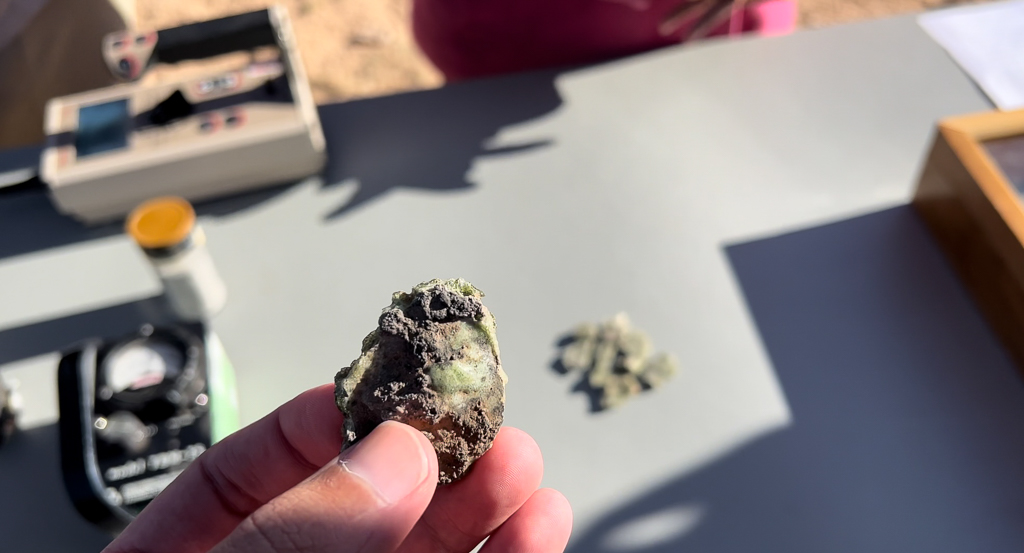
Most of the trinity it is light green but other pieces are slightly different colors. Some are black and others look slightly red and that’s because those contain elements that were vaporized during the test.
For example, the black pieces contain elements from the steel tower and the red pieces contain elements from the copper in the wires.
If you stroll around Ground Zero and look closely at the ground it won’t be very difficult to find pieces of trinitite.
They possess background levels of radiation and you are okay to touch them but probably not a good idea to do something stupid with them like swallow them. It’s also a federal crime to remove them from the property.
You’ll also want to stop by the trinitite fueling station. Here, you can get a close look at trinitite and also use a geiger counter to detect the radiation levels of the trinitite.
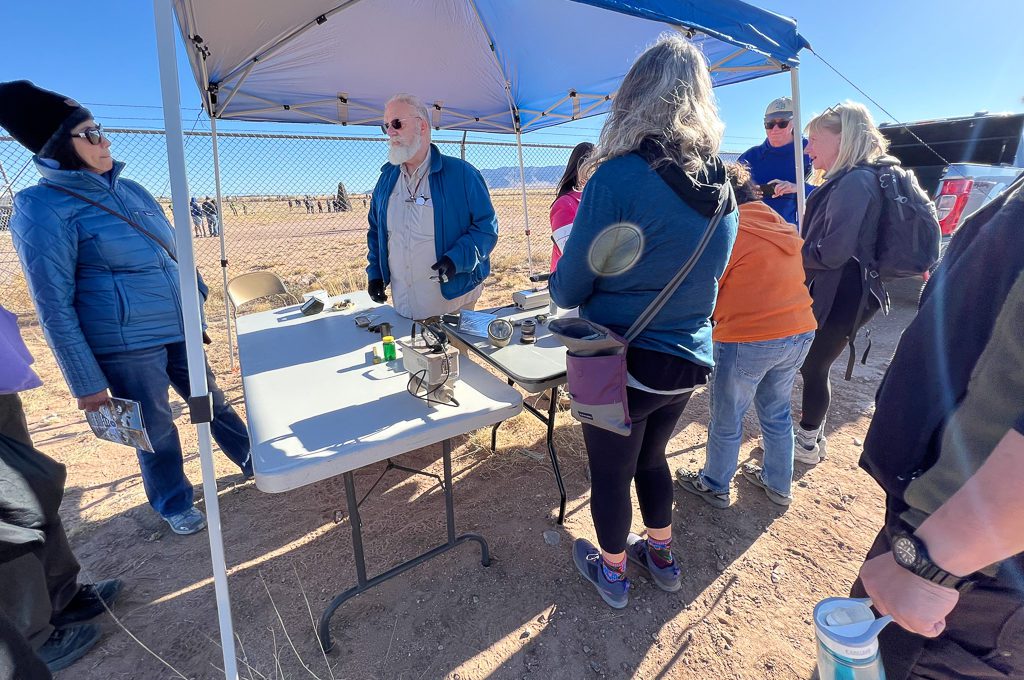
McDonald Ranch House
The McDonald Ranch House is where they assembled the bomb on July 13, 1945. Built in 1913 by Franz Schmidt, a German immigrant and acquired by the McDonald family in the 1930s, the ranch was eventually taken over by the government in 1942.
In order to get there, you need to head to the bus stop which is located right by the parking lot. It’s only about a 5 to 10 minute bus ride to get to the ranch house. Keep in mind that dogs are not allowed on the bus unless they are service animals.
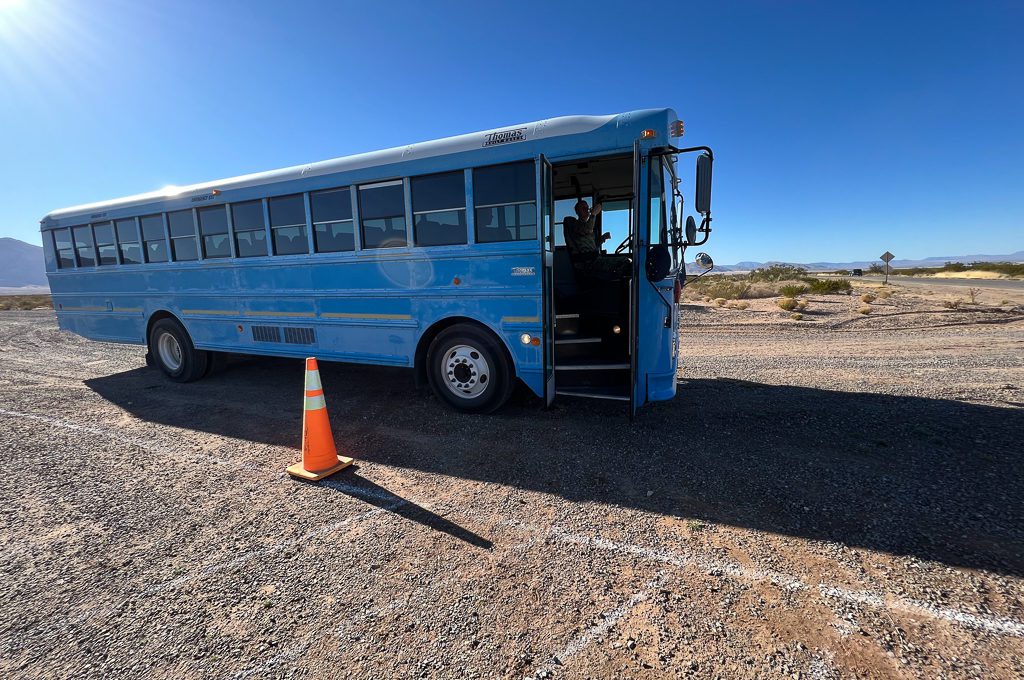
When you arrive, you can simply wander through the McDonald Ranch House at your own pace. There should be somebody inside that can help answer any questions you might have and who can show you around.
They also had a table with photographs set out in front so you can learn a little bit more about the structure.
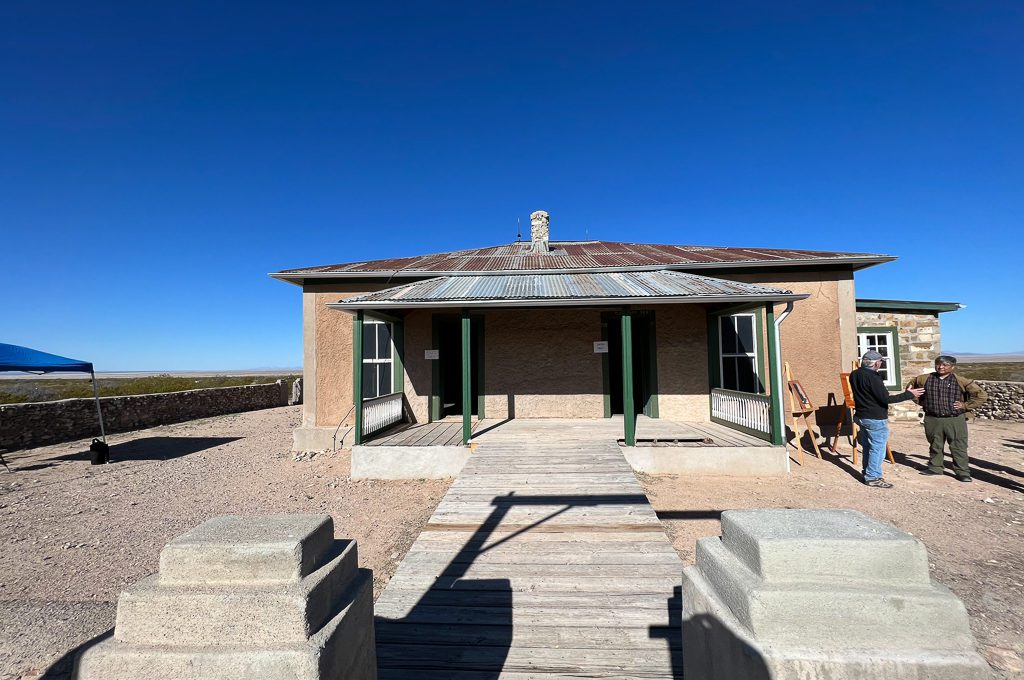
The northeast room was designated the assembly room where they had work benches and tables.
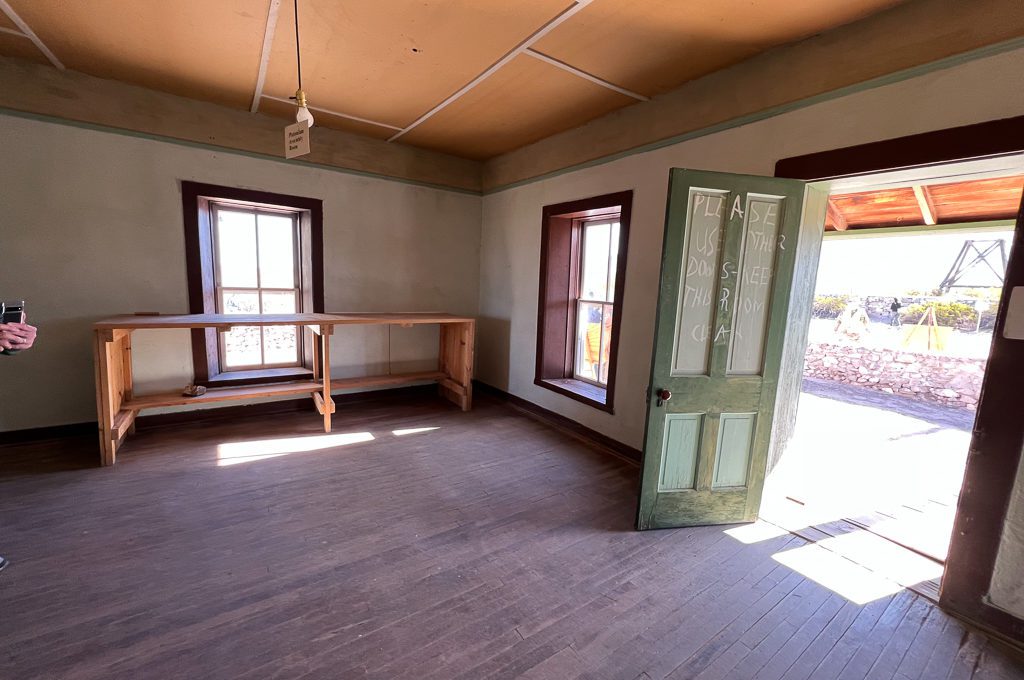
To keep all of the sand and dust from ruining the instruments, they covered the windows and walls with plastic. In fact, you can still see some of the nails that were used to seal up the windows.
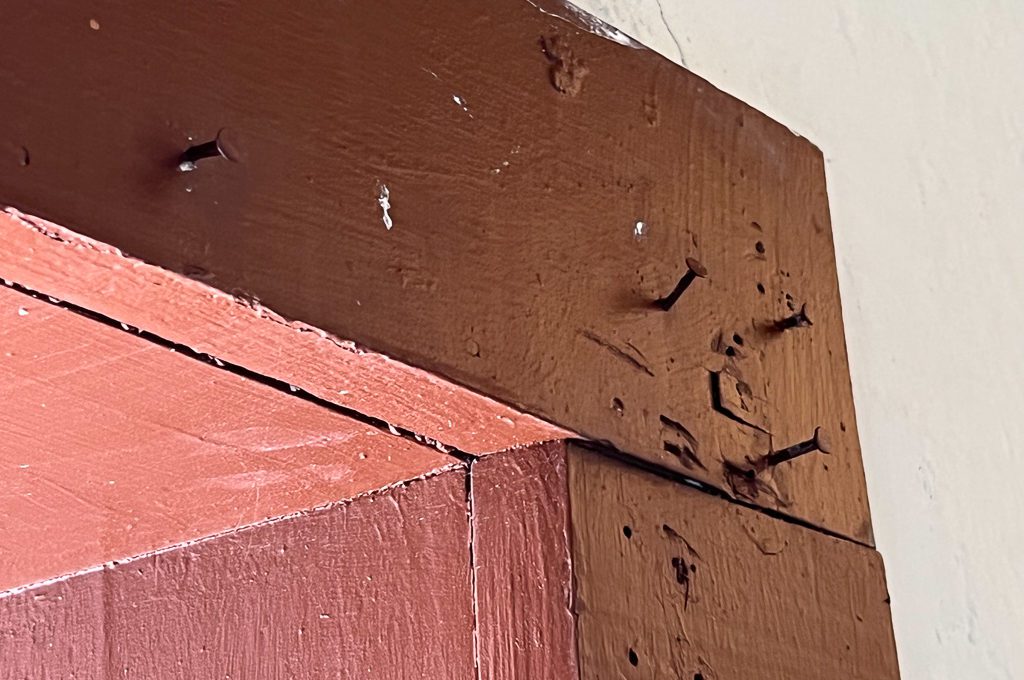
As mentioned above, the plutonium core was delivered to the ranch house on July 11, 1945 and it was assembled on July 13, 1945.
The explosion occurred only 2 miles (3.2 km) away and it blew most of the home’s windows out but did not significantly damage the structure.
Instead, it was the years of rain water leaking through the roof that was responsible for the deterioration.
In 1984 it was restored by the National Park Service to appear as it did on July 12, 1945
Jumbo
Near the main parking lot you’ll see Jumbo which is a large structure which was once the heaviest object to ever be transported by rail.
The 25-foot jumbo container was initially going to be used to contain the plutonium with its 14 inch thick walls in the event of a botched explosion.
However, after they realized that they would have plenty of plutonium for additional bombs they didn’t need to use jumbo for the explosion.
So they hoisted it from a tower about 800 yards away from ground zero and while that tower would be vaporized during the explosion, jumbo would remain intact.
While they did not use it for this explosion, it was used on April 16, 1946, when an Army ordnance team detonated eight 500 lb bombs in the bottom of the steel container.
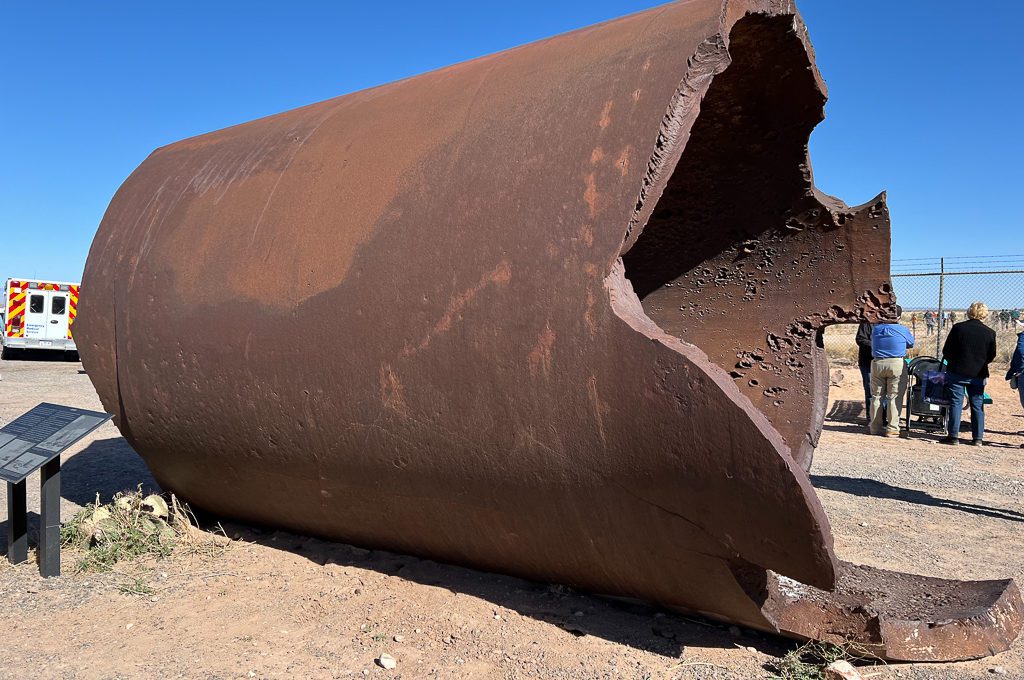
Food and souvenirs
You’ll also be able to find food and souvenirs at the Trinity site.
Souvenirs range from about $3 to $20 and they have a lot of the typical stuff like magnets, stickers, patches, and T-shirts.
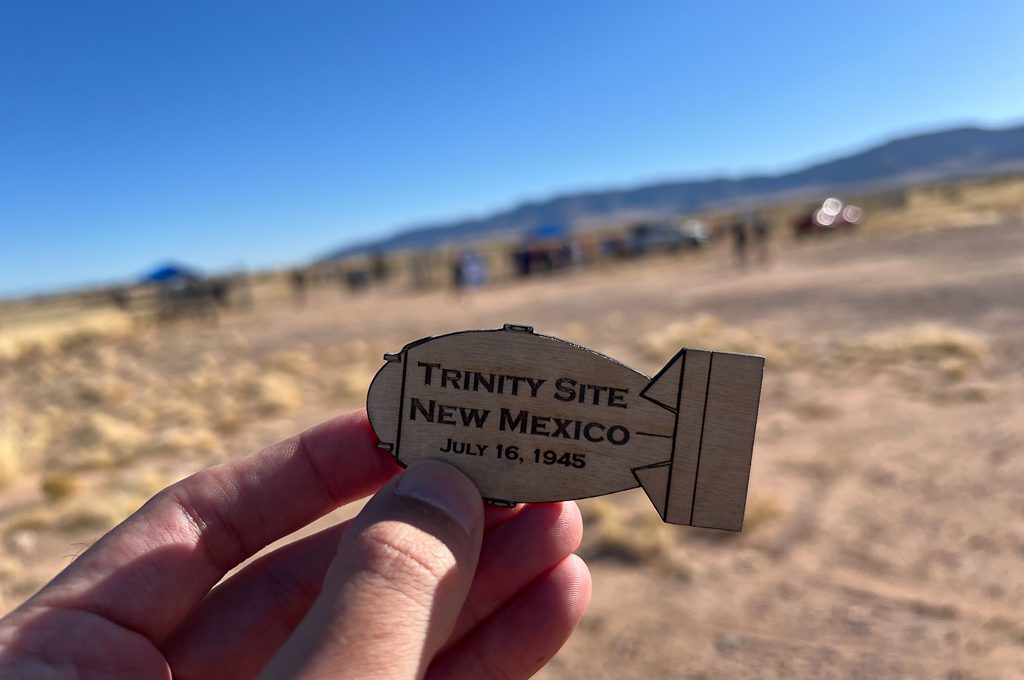
As for food, they’ll have breakfast burritos, hamburgers, hotdogs, and some other snacks. I believe the registers should take credit cards but I would bring cash just in case.
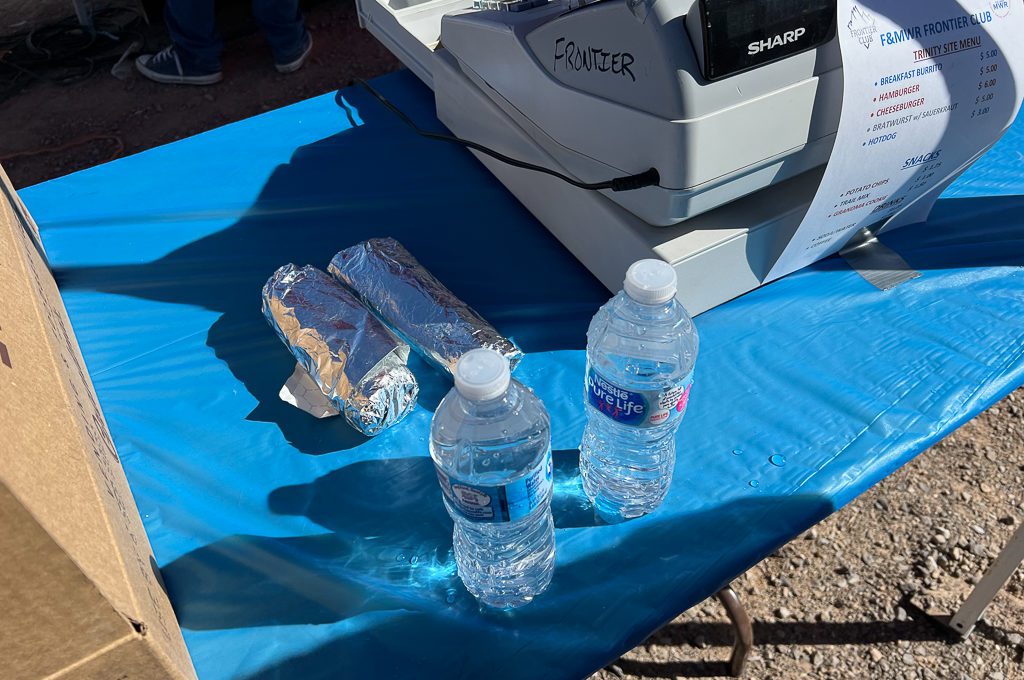
Also, they do have bathrooms which are a little bit of a walk from the parking lot.
Final word
Visiting the Trinity Site is not very easy because it is only open two days out of the year and it’s basically in the middle of nowhere.
But it is still absolutely worth planning out a visit because it’s hard to find a location that compares to the Trinity Site in terms of its importance to the history of mankind.
Daniel Gillaspia is the Founder of UponArriving.com and the credit card app, WalletFlo. He is a former attorney turned travel expert covering destinations along with TSA, airline, and hotel policies. Since 2014, his content has been featured in publications such as National Geographic, Smithsonian Magazine, and CNBC. Read my bio.

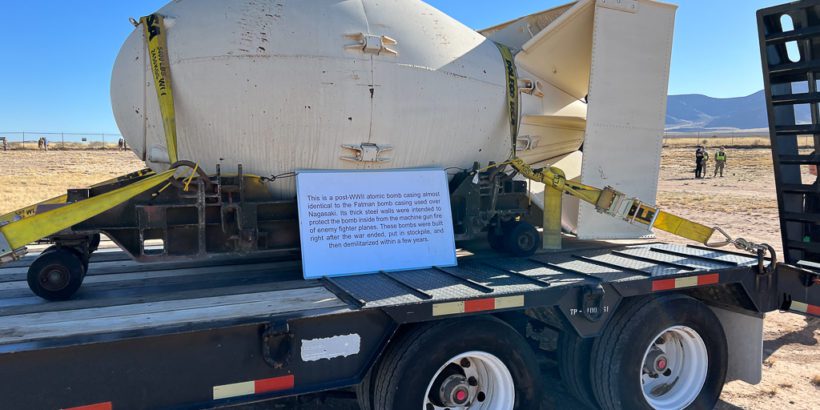
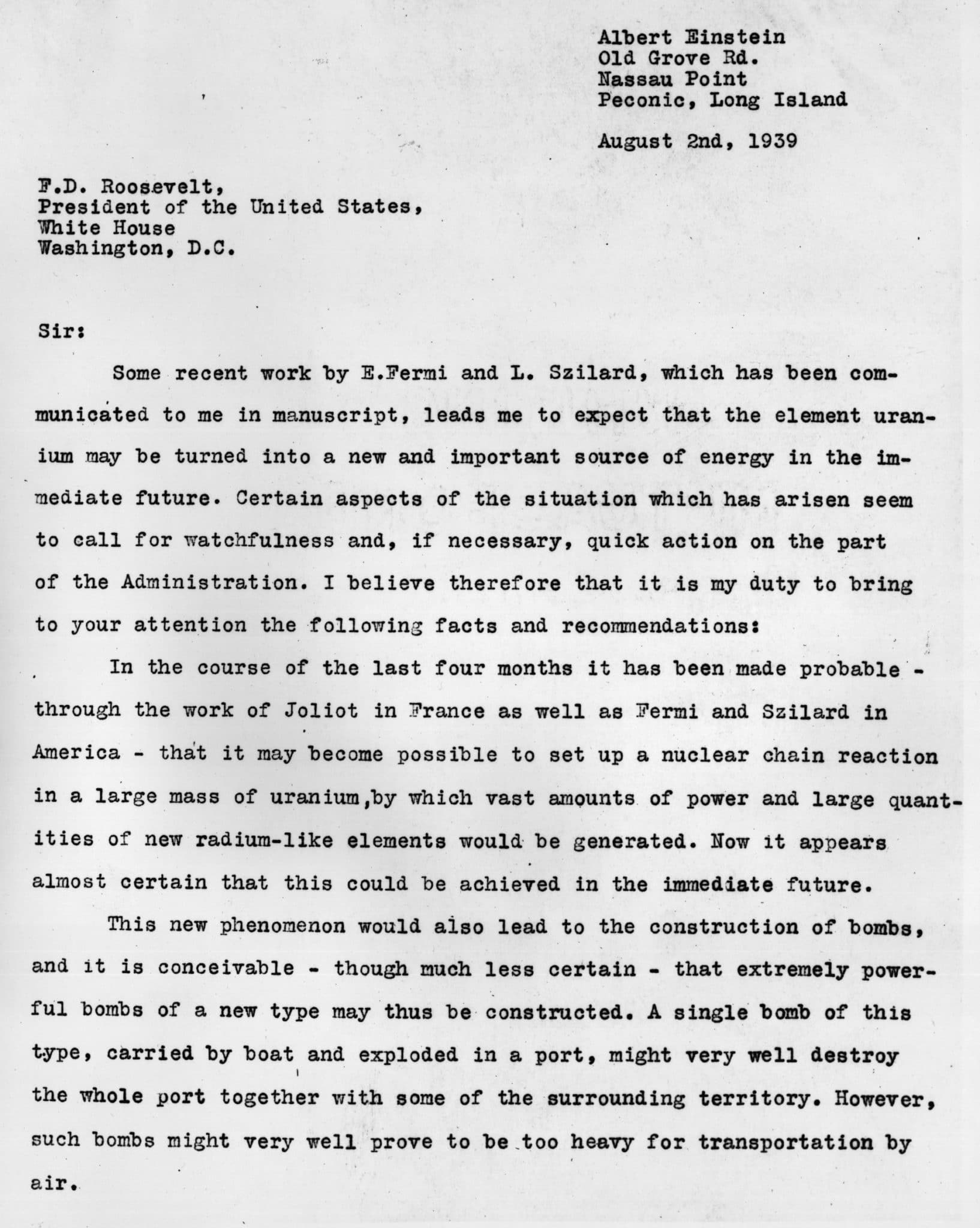
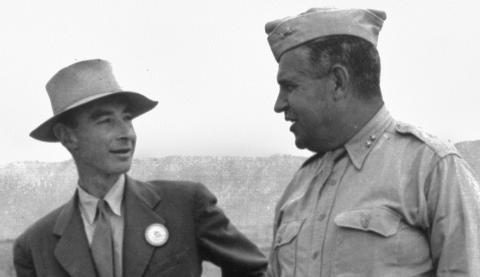
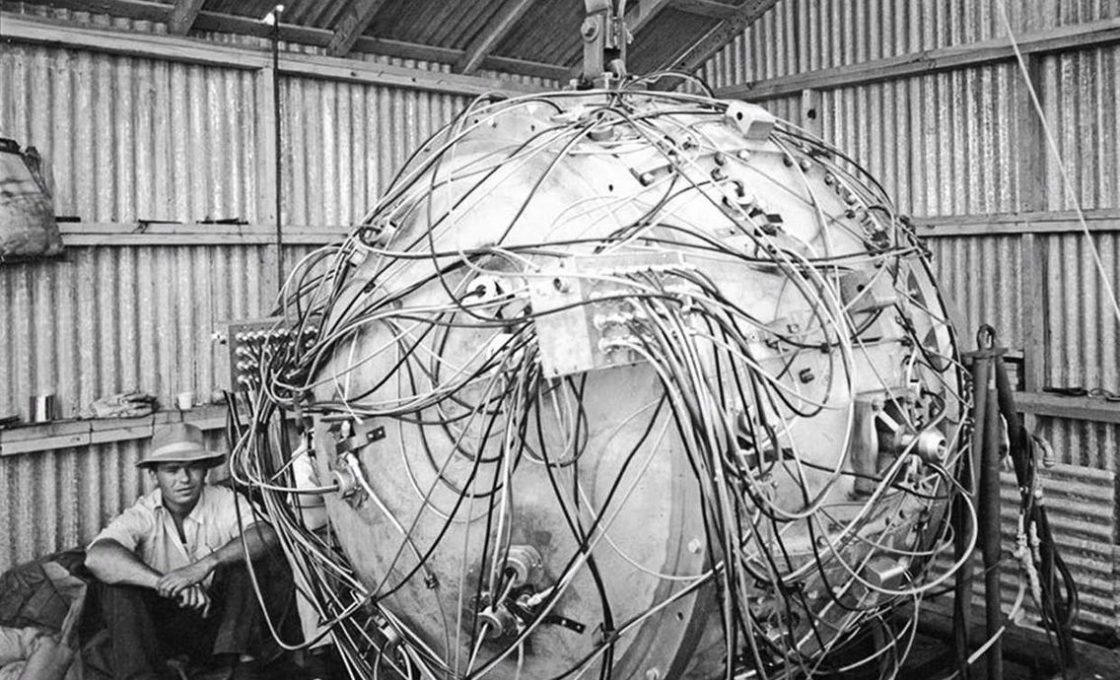
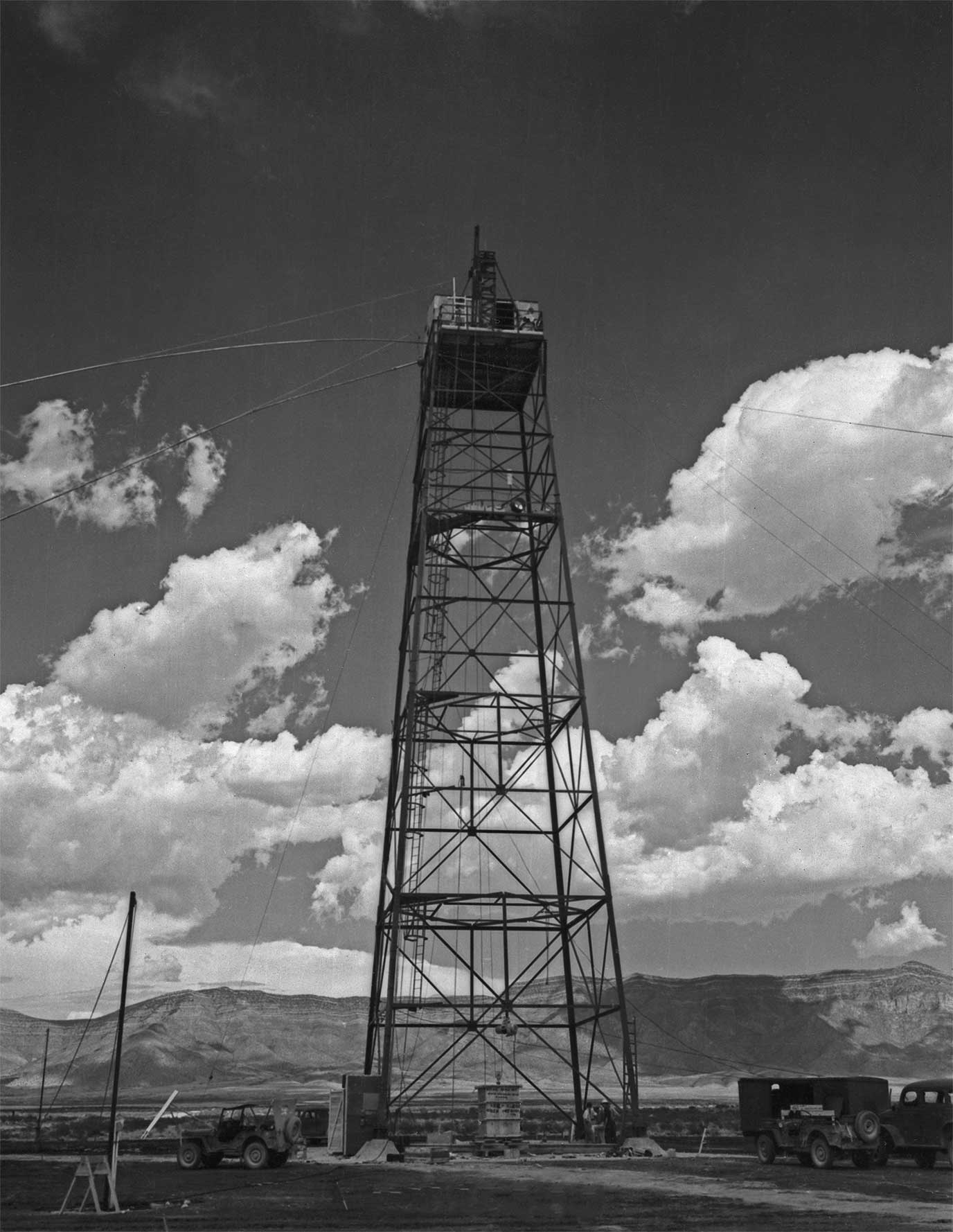
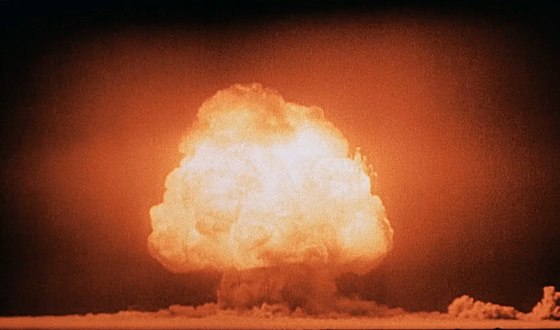
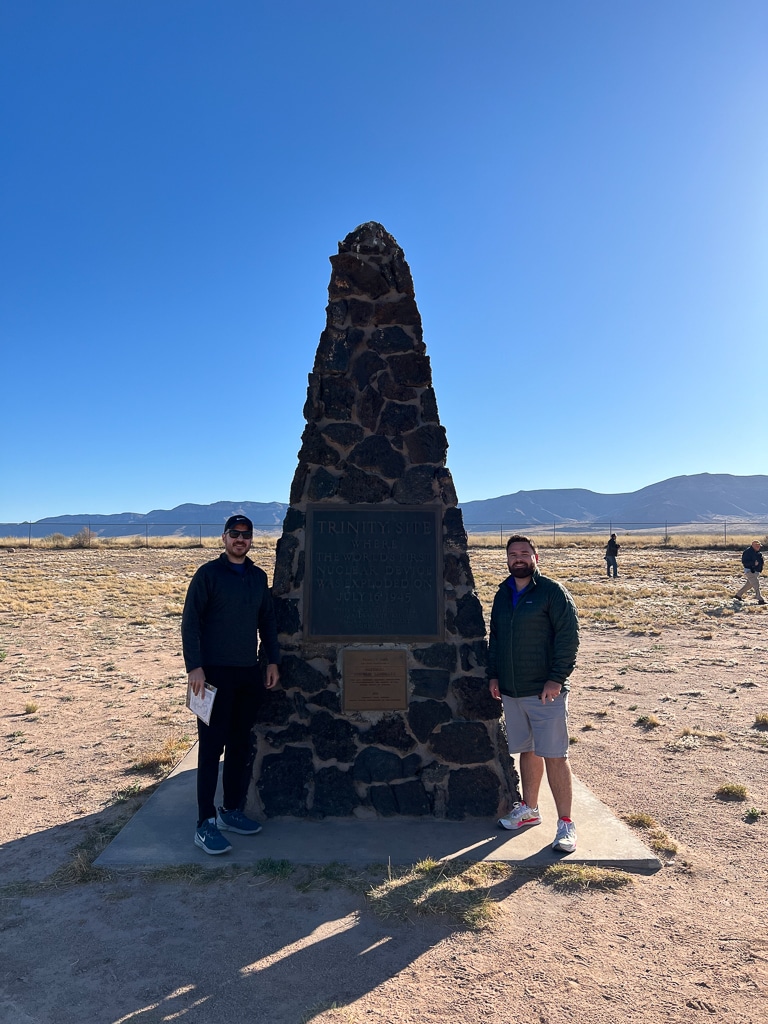
very informative. i am planning a visit in october 2023. was wondering about the mcdonald ranch house, and you answered all my questions…. this trip in october will knock off another event on my bucket list.
July 2023: The tour package is now $150 per person.
Confused. Sorry. From a that I see it’s free to drive and take pictures of the monument and see site from distance What is the 150.00 Charge for. It’s free to drive up and see site frown distance Can I also see McDonald house for free. Please advise. Coming from Dallas How can I get free brochures for trinity mailed to me on trinity testing Came I get a number to call. Please let me know.